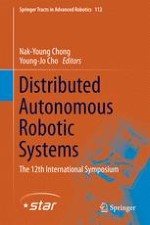2016 | OriginalPaper | Buchkapitel
Distributed Co-optimisation of Throughput for Mobile Sensor Networks
verfasst von : Trung Dung Ngo
Erschienen in: Distributed Autonomous Robotic Systems
Verlag: Springer Japan
Aktivieren Sie unsere intelligente Suche, um passende Fachinhalte oder Patente zu finden.
Wählen Sie Textabschnitte aus um mit Künstlicher Intelligenz passenden Patente zu finden. powered by
Markieren Sie Textabschnitte, um KI-gestützt weitere passende Inhalte zu finden. powered by
